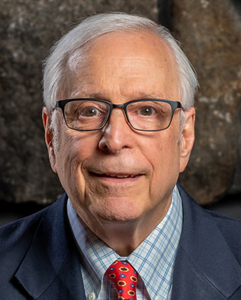Leaders need to go beyond knowing the answers to seeking the answers. How can I become a more effective leader? What steps can I take to enhance my leadership skills? Every thoughtful executive or manager should ask such questions regularly. In this article, we’ll offer some practical approaches to answering those questions – and better understanding the leadership journey.
In any work we do, our performance and success is built upon our academic education and formal training plus our accumulated knowledge from practicing the craft. Leadership is no different. Although the academic study of leadership is uneven, academic training in leadership development may start with a course in human behavior at the college level, with additional courses at the Masters or MBA level. Once an individual is in the workforce, there are many organizations that study leadership and offer a variety of instruments to help appraise leadership skills. Formal training in leadership is available long after formal schooling.
After our academic pursuits, we take on our first assignment at a company or other organization and probably have a first business encounter with leadership – through our supervisors. Often it is these first assignments that help us to shape our view of leadership. If we are fortunate to have an accomplished supervisor, we may learn a number of positive behaviors to model. On the other hand, if we are less fortunate and have a supervisor less capable at managing and leading, then we see the harmful side of leadership.
Soon, if we do well in business, we will likely get promotions and be in charge of supervising others. Then we get another taste of leadership. Invariably what we learn is that a large part of leadership development is by trial and error. And so the leadership journey begins; it is a journey that continues throughout our entire life. Many senior business leaders have been developed over periods of years by their organizations, which provide up-and-coming managers with an ever-increasing level of assignment complexity that continues to reinforce their development and test their proficiency along the way. Sometimes, organizations push their people beyond their capability and, unfortunately for the company and the individual, place them in positions where they ultimately fail.
Fundamentally, leaders are made, not born. Leaders are like athletes; some have more natural talent than others. But both leaders and athletes need constant practice to develop their talents. Keep in mind that it is widely reported that Michael Jordan, as a youth, was unable to make the varsity basketball team as a 10th grader at his high school in Wilmington, North Carolina. After that experience, the young Jordan practiced for many, many hours. Through practice, he was able to make the varsity the following year, was recruited to North Carolina and went on to achieve great success in the NBA. Like aspiring athletes, aspiring leaders need to work hard to develop and hone their skills.
Ask a successful leader about his or her leadership development, and each one will describe a particular path he or she followed to achieve success. However, the path is different for each. The journey of leadership development occurs in many ways and there is no comprehensive formula for realizing ultimate leadership success. After all, leading is very much an art rather than a science – which makes it one of those subjects difficult to research and study with any great degree of precision. But leaders are intuitive in nature and they are skillful at “connecting the dots.” When they discover a leadership competence that is effective, they replicate it and add it to their catalog of management skills. Moreover, they practice it daily, until it becomes second nature to them.
Although there is no simple one-size-fits-all path to leadership development, there are common themes in many business leaders’ journeys. There are steps we can take that help us develop as leaders. In this article, we’ll explore twelve techniques that can help us grow into enlightened leaders. Leadership is a learnable skill – and discipline – and these approaches can help us learn to improve our own leadership competencies.
Build on strengths – and look beyond them:
Each of us starts our professional career with a background in a particular area of interest, such as engineering, accounting, sales and marketing, or general business. Once we master the technical skills required in our field, we are then able to build upon those skills, using them to contribute to broader strategy development for the organization.
Take, for example, the work done by Judy Lewent, the highly-respected CFO of Merck & Co. Inc. As reported in a 1994 “Harvard Business Review” article, Lewent was able to introduce new financial concepts and collaborate with operating divisions to develop more effective decision-making tools. Her goal was to ultimately expand shareholder returns by optimizing profitability. In order to accomplish this objective, she had to collaborate with the operating units, reaching beyond her financial training and working closely with colleagues in other functional areas. Her first foray into partnering was with Merck’s Research Division, where she brought analytical tools, including Monte Carlo simulation techniques, to the decision-making process for selecting research projects. Merck outperformed the Dow Jones Industrial Average over the past ten years by approximately 40 percent, and Lewent was promoted to Executive Vice President and President of Human Health Asia in 2002.
To develop as leaders, we need to first master and build upon our areas of expertise – and then move beyond them. We cannot lead a corporation effectively with only the eyes of a finance specialist, marketer, or technologist. To grow as leaders, we have to look both for opportunities to further develop our core competencies, but also for assignments that will broaden our perspective and help us understand other disciplines and their relationship to decision-making. Cross-functional assignments – where we get a chance to work with colleagues from other functions within the corporation – can be particularly helpful tools for developing our broader leadership skills.
Leadership Action Step 1
Ask yourself: At this stage in my leadership journey, do I need to focus more on developing my mastery of core competencies – or is it time to learn new skills? What opportunity or assignment can I seek to increase my leadership potential?
Check back for more each month on this continuing series
Now ask yourself… Am I a Leader?

